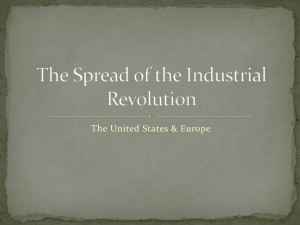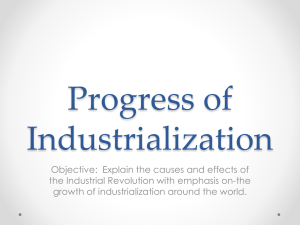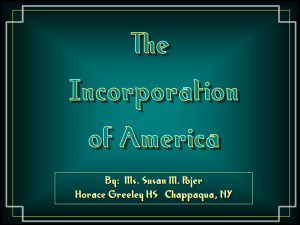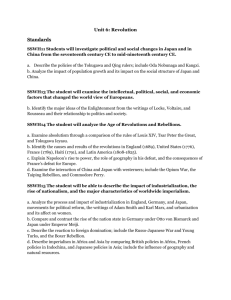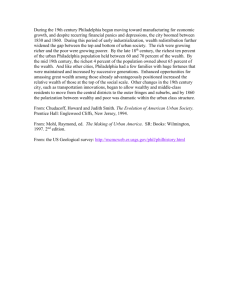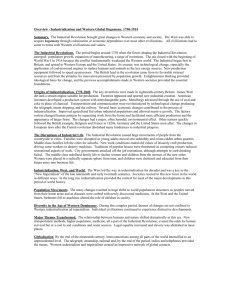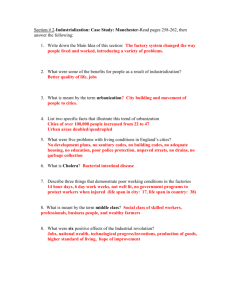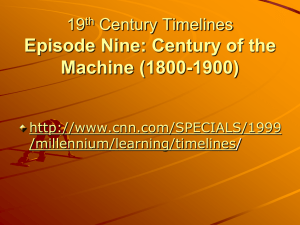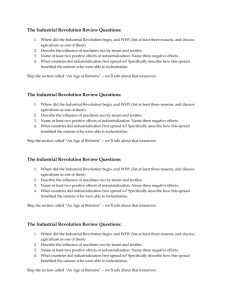Process Engineering and Industrial Management: Industrial Projects
advertisement
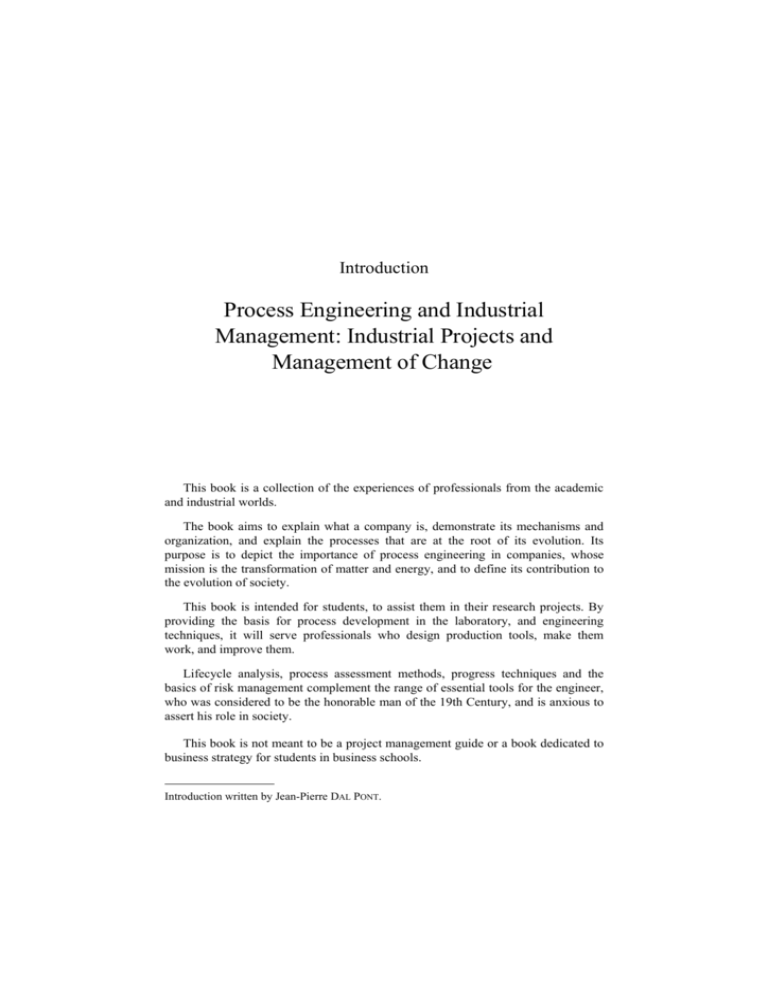
Introduction Process Engineering and Industrial Management: Industrial Projects and Management of Change This book is a collection of the experiences of professionals from the academic and industrial worlds. The book aims to explain what a company is, demonstrate its mechanisms and organization, and explain the processes that are at the root of its evolution. Its purpose is to depict the importance of process engineering in companies, whose mission is the transformation of matter and energy, and to define its contribution to the evolution of society. This book is intended for students, to assist them in their research projects. By providing the basis for process development in the laboratory, and engineering techniques, it will serve professionals who design production tools, make them work, and improve them. Lifecycle analysis, process assessment methods, progress techniques and the basics of risk management complement the range of essential tools for the engineer, who was considered to be the honorable man of the 19th Century, and is anxious to assert his role in society. This book is not meant to be a project management guide or a book dedicated to business strategy for students in business schools. Introduction written by Jean-Pierre DAL PONT. xx Process Engineering and Industrial Management It is above all a general book, a book of reflection in which the reader can benefit from the basic knowledge scattered across multiple works. It rests on two essential pillars: process engineering and the company. The concept of process engineering followed the concept of chemical engineering which originated in the United States during the early 20th Century when the oil industry was in the development stage. It accompanied the extraordinary growth of the chemical industry, in particular, during and after World War II. This concept, developed by the late Jacques Villermaux, Professor at the ENSIC (National School of Chemical Industries, Nancy, France), was based on the fact that chemical engineering techniques can be applied to all process industries, that is to say all industries that can transform matter and energy; pharmaceuticals, biotechnology, paper, cement, the environment, energy, metallurgy, cosmetics industries, and so on. It received its consecration at the first congress held in Nancy, France in 1987. The GFGP (French Group of Process Engineering) was founded in 1988, and in 1997 became the SFGP (French Process Engineering Society), a learned society whose mission is to promote process engineering. Manufacturing industry deals with the production of “discrete” goods with defined outlines (automobiles, electronic appliances, construction industry, etc.). Many chemical products of all kind are used in the processes of this industrial sector. A European car uses 130–190 kg of plastics, silicones, paints (5 kg), oils (4 kg), and glass (90–140 kg). Process and manufacturing industries have much in common whether it is management, strategic approach, how projects are led, concept of sustainable development, risk management, and so on. The industrial company, as we presently know it, was shaped during the 18th Century. As early as 1712, blacksmith Thomas Newcomen’s atmospheric steam-engine enabled the use of mines by pumping out water that flooded them frequently. During the 19th Century, the Industrial Revolution expanded rapidly in Britain due to the industrial use of steam. France, Germany, and the United States followed suit from the mid-19th Century. Players in the Industrial Revolution raised their capital to move from inventions toward innovations, of which the railways are perhaps the best illustration. They invested by taking risks to create the most diverse machines which enabled them to create wealth. These enormous changes wreaked total havoc on predominantly rural Introduction xxi societies as well as on the environment. In Britain, the first industrialized country, it was not until the late 19th Century that the average individual started enjoying the benefits of industrialization. Extraordinary characters who were active between the 19th and 20th Centuries, such as Edison, Ford, Fayol, Taylor, to name but a few, invented the basics of company management which are still in use today. The company that we are focusing on is essentially the industrial company which can be distinguished from service companies by the fact they use an industrial tool. That distinguishes them from service companies. To take an example: an industrial company will use its know-how in process engineering to transform fossil resources and biomass into all sorts of chemicals, pharmaceuticals, transportation means, power generators, and so on, to offer society an increasing number of goods and services that are essential for human well-being. The company today is still a source of wealth and well-being but may also be a source of harm to both humans and the environment. The company must take itself to task. It is faced with a situation that is unprecedented in the history of mankind, and subjected to considerable changes. The company, through its innovations, causes societal change at a rate never seen before. Let us cite some of the most critical challenges faced by our societies: – the depletion of raw fossil materials with increasing costs due to their location in inhospitable areas or politically unstable countries: oil, copper, lithium, rare earth minerals, and so on; – developed countries had become accustomed to abundant energy at a low price, which in addition to comfort, which gave us a sense of unprecedented freedom where mobility is the most visible consequence. Those days are gone! – water scarcity. Water is life! A billion people do not have a sufficient quantity and quality of water. This water imbalance has led to water borne diseases especially in young children, and this may become a source of conflict if planned efforts are not implemented worldwide! 500 million people live in the Brahmaputra basin. Tibet is the water tower of Asia! The White Nile and Blue Nile pass through 10 countries! The Turkish project, called Anatolia of the South-East, includes 22 dams; giving Turkey control of the Tigris and the Euphrates! – global warming is subject to controversy, but its effects are already manifesting themselves! Examples of global warming include melting glaciers, melting ice packs, vegetation change, rising sea levels, and so on; xxii Process Engineering and Industrial Management – population growth is putting an increasingly strong pressure on the environment and is accentuating a significant discrepancy in wealth between countries. The aging of the population in some of the developed countries such as Japan, Germany, and Italy is another source of imbalance whose effects are already being felt. The current economic crisis which originated with the bankruptcy of Lehman Brothers in September 2008 took the world by surprise. It highlighted the complexity and opacity of the banking systems. Presently, trust has not been restored. The industrialized world hopes that only growth can create wealth and jobs. This requires consumption leading to a loss of raw materials, and increased adverse human impact on the environment. Has not the world returned to a paradoxical, even inconsistent, economic and industrial process? Globalization has jostled the balance arising from the Europeanization of the world following the conquests of the Portuguese in the 15th and 16th Centuries which was then followed by Spanish, British, French, and German imperialism. Currently, China has emerged as the banker of the United States and the workshop of the world. What a change! The company, faced with increasingly demanding customers in a world under media scrutiny, where everything goes faster and where competition, especially under the impact of emerging countries, is intensifying, should review its strategy in a timely manner. This strategy can be simply defined by answering the following questions: – in which markets should we remain, which should we expand, or abandon? – which technologies should be used, which means of production and distribution should be implemented? Answers to these questions result in a strategic plan for the company. This plan underpins a portfolio of research projects, investments, and disinvestments of structural changes. Its implementation requires knowledge of company operations, project management, and the industrialization process. These areas implement process engineering and the engineering of which it is a component. The company must ensure the smooth running of operations that frees up the profit essential to its survival, and also manage the change resulting from its strategic vision. Change management is implementing processes that rely on hard techniques and the most advanced social and human sciences; part of the book is devoted to this. Introduction xxiii The societies of industrialized countries are based on science and technology. The IT revolution is not over; the petaflops computer has arrived! Along with a society based on IT, a new forward-looking concept can now be added: a society based on knowledge. The employee, to face this changing world, will be forced to undergo training throughout his lifetime. Knowledge management has been made necessary because of the abundance and fragmentation of knowledge generated by the increasing complexity, the proliferation of technology, and by the mobility of required or subjected individuals. The concept of sustainable development is not the latest media concept in fashion. The company is aware that our present behavior will affect the lives of future generations. The development of new products and services must be considered. There arises a question about the future, it is the question of what we want to produce: where and how we want to produce it? These questions require the company to reconsider its research, industrialization, production, and distribution processes in a spirit of continuous improvement and innovation. The reconciliation of the company, customer, and its suppliers will continue. It will also be closer to society and the communities where it operates. In a transparent company, “citizen” is not an empty word. The company will always be judged based on its profit, but this will not be the only criteria. Man is more than ever at the center of the mechanism! A position he should have never left! We increasingly ask the question about “circular” economies based on the rational use of raw materials, where their recycling is made easier by launching “green” eco-designed products on to the market. Will it be otherwise? A new industry needs to be invented with new processes and new “sustainable” equipment. This would be a new industrial revolution! Chemistry and process engineering are essential for its deployment! “Chemistry is our future”, said Thomas Alva Edison ... That was a century ago! The future today is tomorrow! xxiv Process Engineering and Industrial Management Note to reader The chapters can be read separately and are grouped into three parts: – the company today: brief history, description of its structure, and mode of operation; – process development and industrialization: methods to incorporate the laboratory research into an industrial tool to meet current expectations; – the need to adapt the company for the future: this last part aims to explore the methods necessary for organizations to define, develop, and improve competitive industrial tools.


